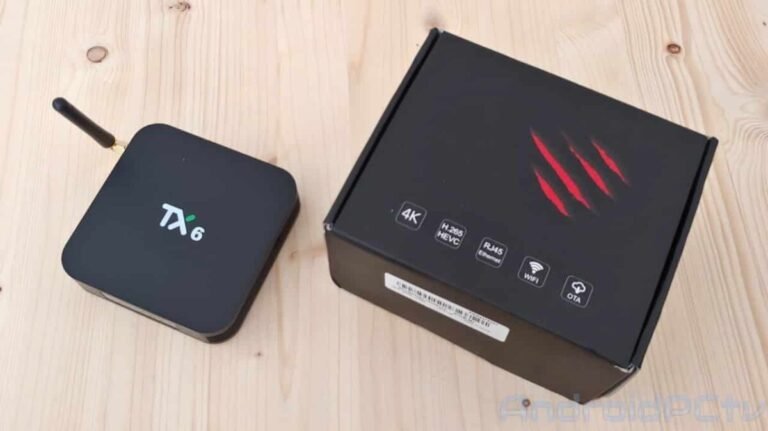How To Fix Ethernet Connected But No Internet Easily
How to fix Ethernet connected but no internet? Despite the new WiFi 6 standard promising speeds above the 1 Gigabit limit, the Ethernet cable was and still is the best way to connect client devices that require low latency and stable throughput. But as with all electronic devices, things can go wrong (hardware or software) and you can end up without internet despite being connected via Ethernet. Don’t worry because unlike a Wi-Fi connection, which is very difficult to fix if something goes wrong, a wired Internet connection has some relatively simple solutions.
While wired connections are cheaper and easier to install, they can cause headaches when it comes to troubleshooting. For example, you may be connected by an Ethernet cable, but you don’t have Internet access. The Ethernet connected but no internet problem could be the power supply, the cable itself, or the internet connection. Let’s see how to further troubleshoot this particular issue.
| Cause of the problem | State of the problem | Solution |
| Connected to the wrong network | avoidable | Turn off your Wi-Fi |
| Misconfigured setting on your device | avoidable | Change your device settings, check whether other devices can access the internet |
| Faulty network drivers | avoidable | Update drivers |
| Interference from device’s security software and firewall programs | unavoidable | Uninstall antivirus software, firewall programs, and other related files |
| Incorrect DNS servers or IP address | avoidable | Check and change your IP address, if necessary |
How To Fix Ethernet Connected But No Internet?
Disable Wi-Fi
Please disable Wi-Fi on your device before troubleshooting your device. Believe it or not, this will tell you whether Ethernet works or not. If your device has Wi-Fi and Ethernet access, it will prioritize Ethernet and you can see if it’s the Ethernet cable or your connection that is bad.
If it still won’t allow access, make sure you have turned off your Ethernet. Open the Network Adapters category on your laptop or desktop and check the name of the Ethernet device card. If you see a computer icon with an arrow, your Ethernet is disabled. Continue to right-click the device name and click activate from the pop-up menu.
Confirm that other devices cannot access the Internet
Another crucial step to take before troubleshooting your device is to check if other devices can access the Internet using the same Ethernet cable. Use another device, computer, or laptop, and make sure it can go online without any problems.
If you find that other devices can connect properly, the problem could be an incorrect device configuration. If other devices are also unable to connect, then the problem is with the network equipment. If there is no internet connection on all devices, perform a quick test by disconnecting the Ethernet cable and connecting it directly to the modem. Once it works properly and you can access the internet, the problem is your router.
Check and update your drivers
The problem could also be that you have faulty network drivers. As a result, you need to update the network card drivers manually or automatically using various applications such as Driver Easy. Visit your device manufacturer’s website and search for driver updates. Download them and try to connect to the internet again.
Disable security software
Unless you don’t have internet access on multiple devices, the problem could be interference from your device’s antivirus software. According to The Register, it was reported that in 2017 Avast’s free antivirus software was preventing many of its online users from accessing the Internet due to a malfunction.
Disable your security software to see if the ethernet connected but no internet persists. Likewise, it is advisable to disable all third-party antivirus programs. It is also helpful to run a malware scan as it may be a malicious application that can tamper with your internet connection.
Check your IP address settings
When you visit a website, your device uses its DNS server to look up the IP address of that website. From time to time, these servers can crash, making it difficult to visit sites that use their friendly domain names. For example, it’s like having a working cell phone without a contact list. You can call anyone, but you don’t know anyone’s number.
Therefore, you can try to diagnose your network problem by making sure your device is getting a valid IP address. Enter an IP address in your internet browser and check if the page loads correctly. For example, you can type 216.58.197.78 (Google’s IP address). If it loaded successfully, change your DNS server or clear the DNS cache to resolve the issue.
- Step 1: Press Win + R on your keyboard.
- Step 2: Type “ncpa.cpl” and press Enter on your keyboard.
- Step 3: Right-click on your network connection (“Ethernet” for wired connection and “Wi-Fi” for wireless connection) and select Properties.
- Step 4: Double click on Internet Protocol version 4 (TCP/IPv4).
- Step 5: Make sure to Obtain an IP address automatically and Obtain a DNS server address automatically are Select and then click OK. (If so, skip this step and go to step 7.)
- Step 6: Check if this resolves the Ethernet connection error. If not, go to the step below.
- Step 7: Select Use the following DNS server addresses and set the server addresses to Google’s public DNS server addresses (8.8.8.8 / 8.8.4.4).
- Step 8: Click OK and check if this solved the Ethernet connected but no internet.
Use a VPN
This is also an effective way to help you solve your Ethernet connection problem.
Using a VPN usually requires some time and computer skills. If you want an easier option, you should try a VPN service. And we recommend using NordVPN.
NordVPN is a fast and easy-to-use VPN service. You can set up a VPN connection with a few mouse clicks. And the super-fast, multi-site servers provide a comfortable, reliable experience.
In addition, NordVPN is one of the few services that has a strict no-registration policy. With its military-grade encryption, NordVPN offers high-level security and privacy.
To use NordVPN on your computer:
- Step 1: Download and install NordVPN on your computer.
- Step 2: Run NordVPN and log in to your account.
- Step 3: Click the Connect button. This will automatically connect you to the VPN server recommended for your device.
Learn more about setting up a VPN on Windows…
Check your Ethernet connection
Perhaps the Ethernet connected but no internet problem is with the cable connection. Make sure the cable is connected correctly. If so, try plugging it into a different port or replace the cable with a new one. So see if this solves your problem.
Restart your computer and router/modem
- Step 1: Turn off your device.
- Step 2: Turn off the router and modem and disconnect them from the power source.
- Step 3: Leave them for a few minutes.
- Step 4: Reconnect all these devices to the power supply and turn them back on.
- Step 5: Check if this fixes the internet connection error.
Conclusion
There is no perfect formula for these network problems. However, you can easily fix Ethernet connected but no internet problem by making sure that all your devices are configured correctly and that nothing is blocking the connection. By following the steps above, your internet connection should return. If you’ve tried all the steps above, but still can’t connect to the Internet, contact your ISP as the issue may be resolved.




![How To Enable and Customize Samsung Galaxy S21 Always On Display [2024 Update] 4 How To Enable and Customize Samsung Galaxy S21 Always On Display 2021](https://9jaboizgist.com.ng/wp-content/uploads/2023/10/Enable-and-Customize-Samsung-Galaxy-S21-Always-On-Display-2021-scaled-1-768x432.jpg)


